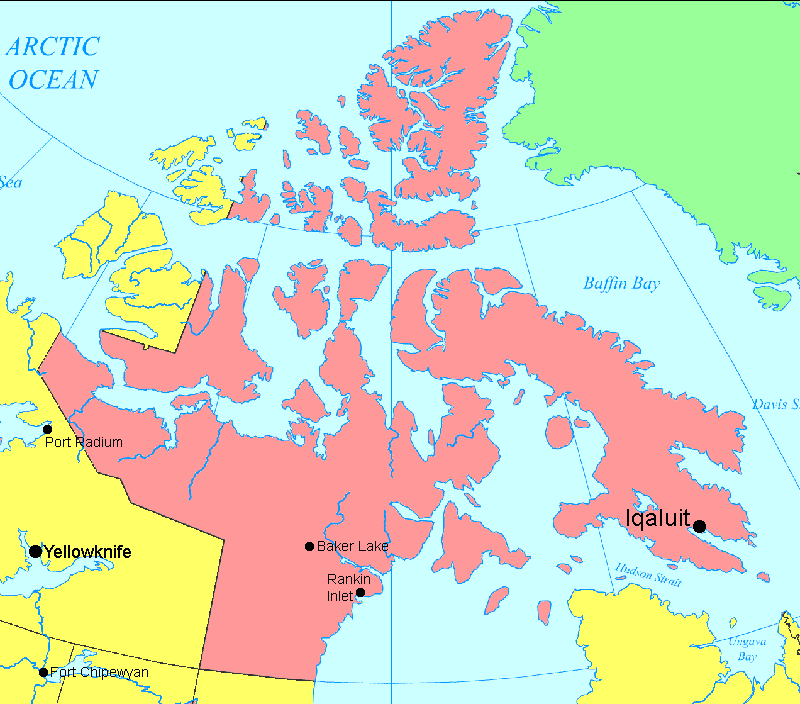|
Nunavut
Nunavut is the largest and newest of the territories of Canada: it was separated officially from the vast Northwest Territories on April 1, 1999 via the Nunavut Act and the Nunavut Land Claims Agreement Act, though the actual boundaries were established in 1993. The capital of Nunavut is Iqaluit (formerly Frobisher Bay) on Baffin Island in the east. Other major communities include Rankin Inlet and Cambridge Bay. Nunavut also includes Ellesmere Island in the north and the east of Victoria Island in the west. Nunavut is both the least populated and the largest of the provinces and territorities of Canada. It has a population of only about 29,300 (Nunavummiut, sg. Nunavummiuq) spread over an area the size of Western Europe. If Nunavut were a sovereign nation, it would be the least densely populated in the world: nearby Greenland, for example, has almost the same area and twice the population. Nunavut means our land in Inuktitut, the language of the Inuit. Along with Inuktitut, Inuinnaqtun, English, and French are also official languages. The region now known as Nunavut has supported a continuous population for approximately 4000 years. Most historians also identify the coast of Baffin Island with the Helluland described in Norse sagas, so it is possible that the inhabitants of the region had occasional contact with Norse sailors. The recorded history of Nunavut began in 1576. Martin Frobisher, while leading an expedition to find the Northwest Passage, thought he had discovered gold ore in what is now known as Frobisher Bay on the coast of Baffin Island. The ore turned out to be worthless, but Frobisher made the first recorded European contact with the Inuit. The contact was hostile, with Frobisher capturing four Inuit people and bringing them back to England, where they quickly perished. Other explorers in search of the elusive Northwest Passage followed in the 17th century, including Henry Hudson, William Baffin and Robert Bylot. In 1976, negotiations for a land claim agreement and the new territory between the Inuit Tapirisat of Canada and the federal government began. In April 1982, a majority of Northwest Territories residents voted in favour of a division, and the federal government gave a conditional agreement seven months later. A land claims agreement was reached in September, 1992 and ratified by nearly 85% of the voters in Nunavut. In June 1993 the Nunavut Land Claims Agreement Act and the Nunavut Act were passed by the Canadian Parliament, and the transition was completed on April 1, 1999. Nunavut's small and sparse population makes it unlikely the territory will be granted provincial status in the foreseeable future, although this may change when and if the Yukon, which is only marginally larger in population, becomes a province. |
||||||||||
